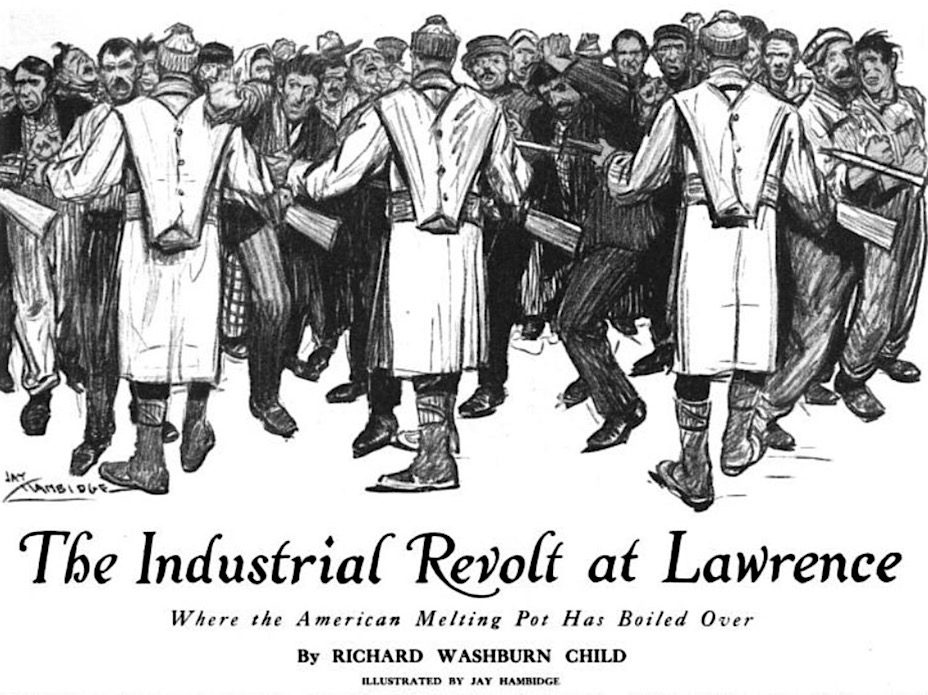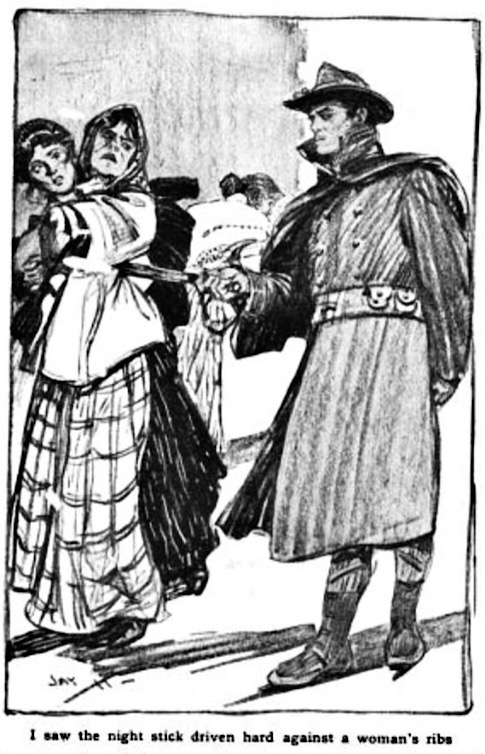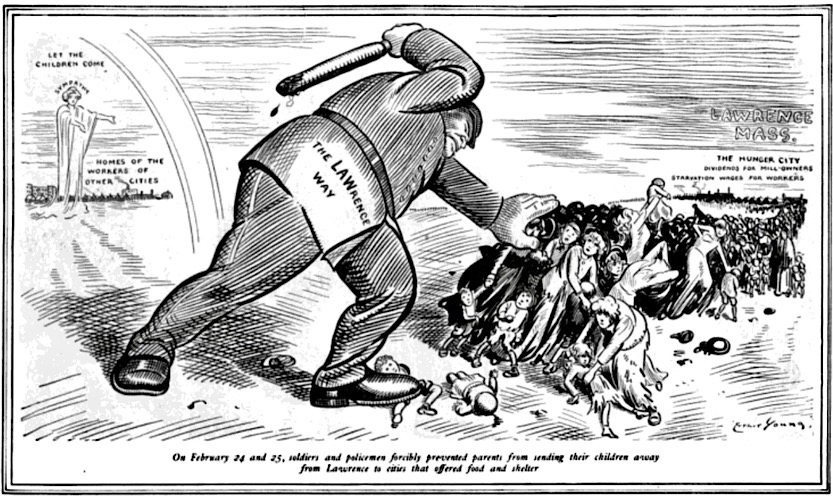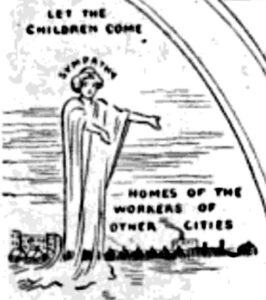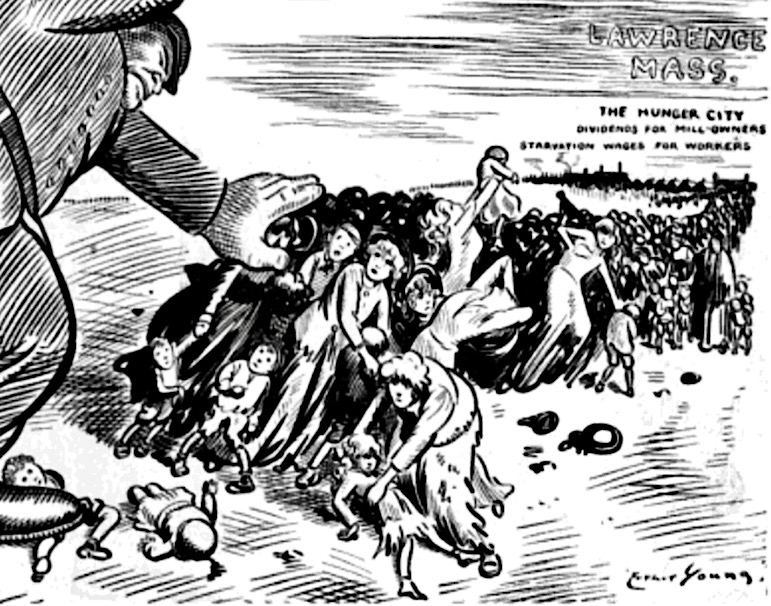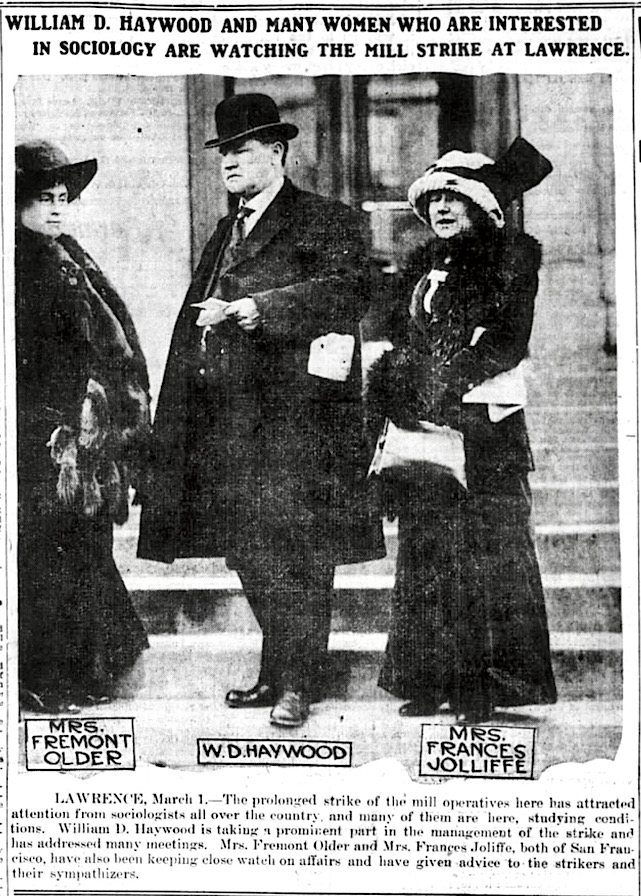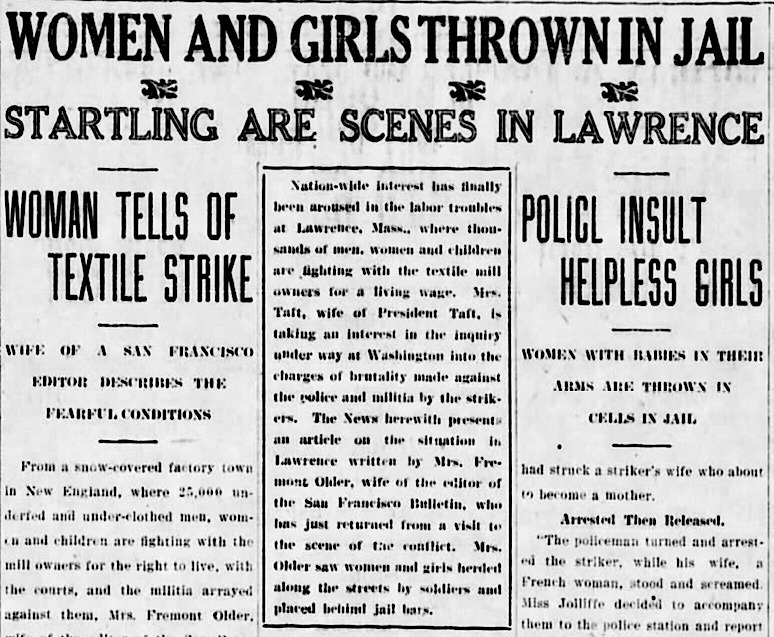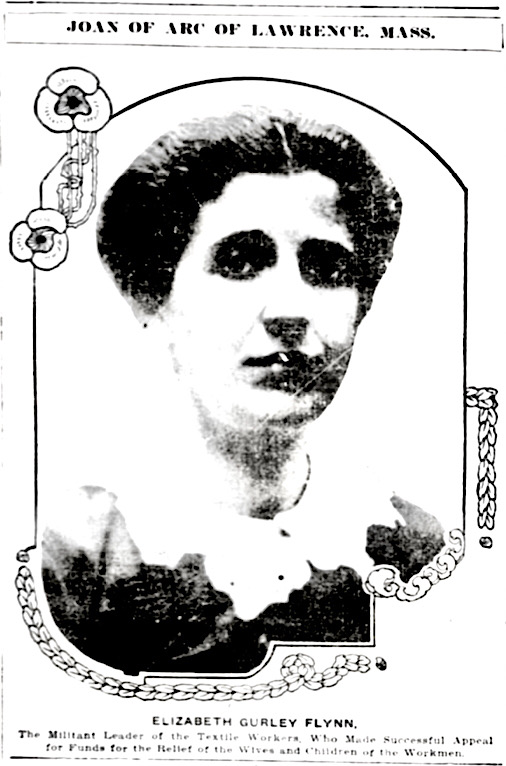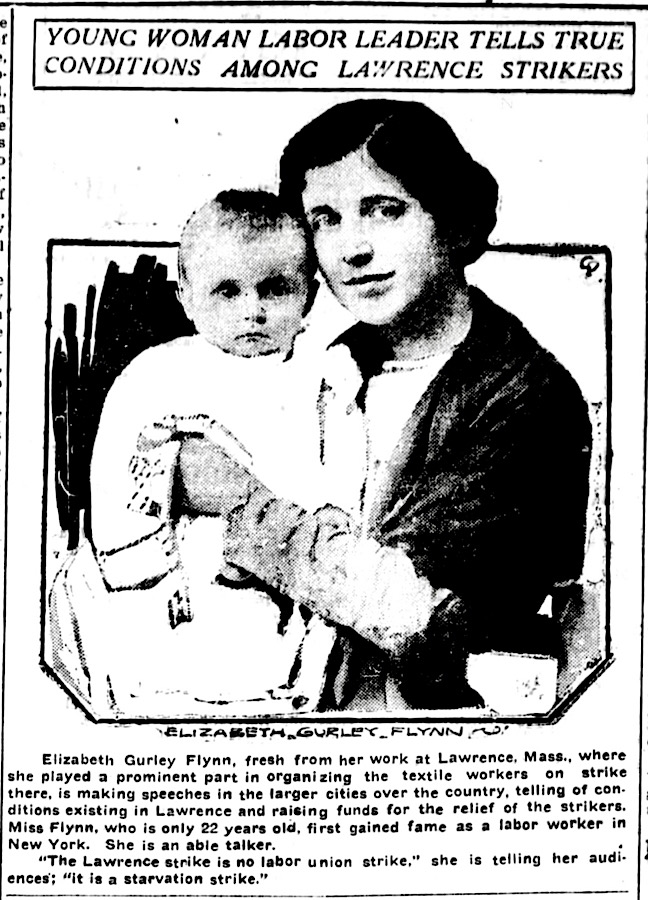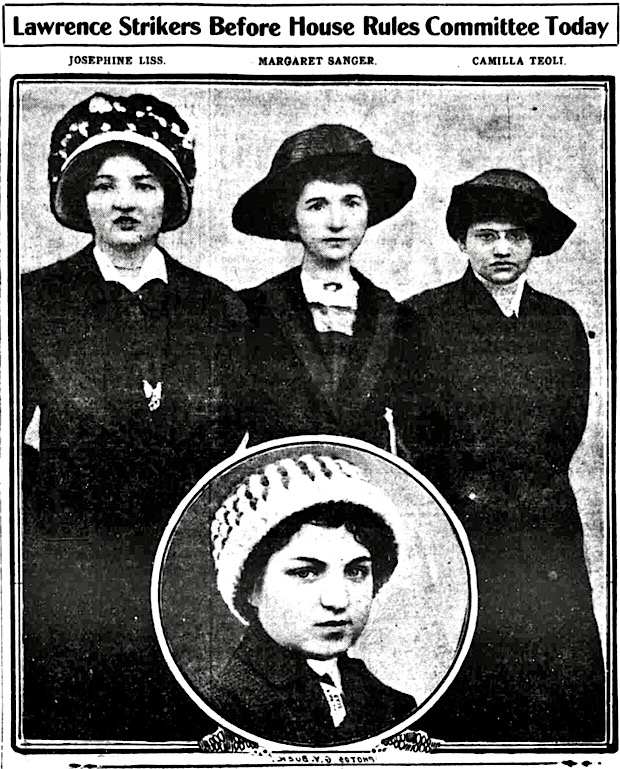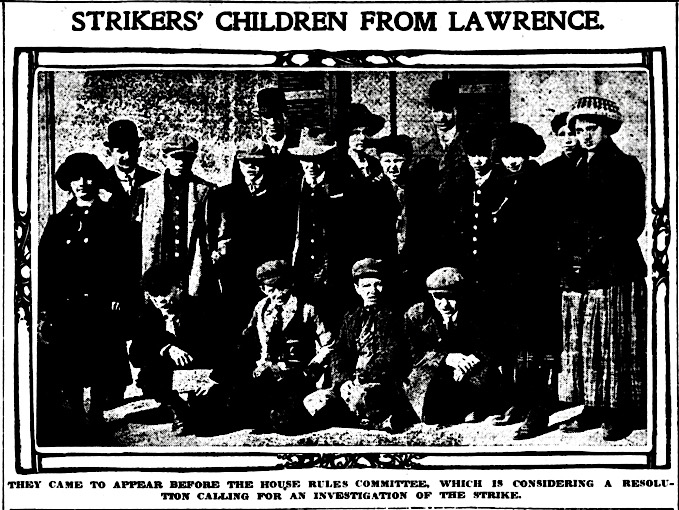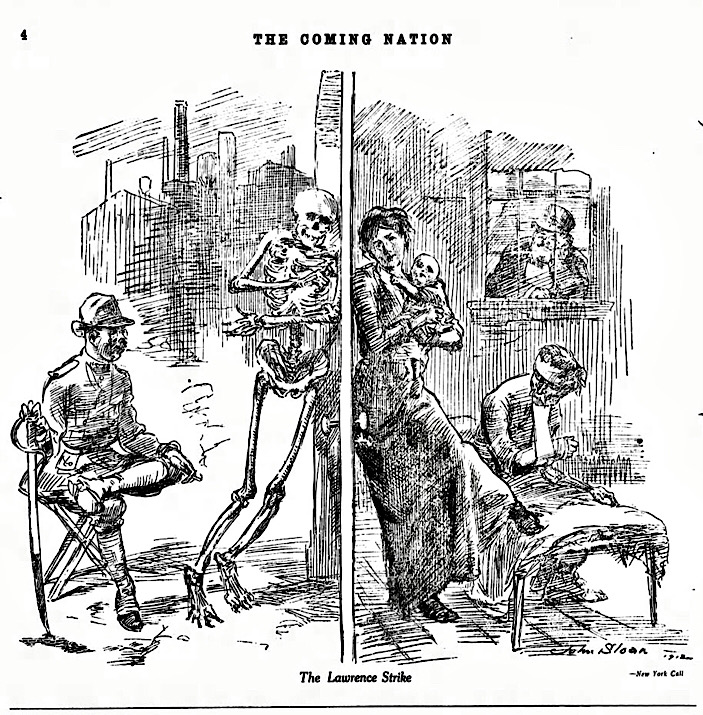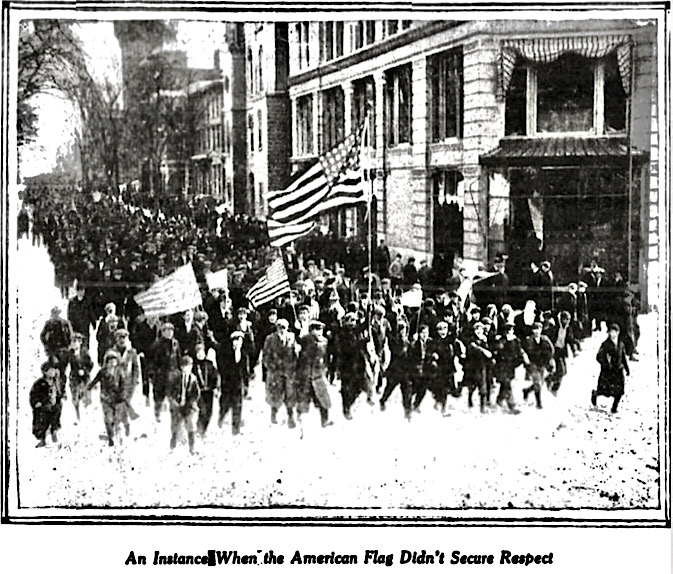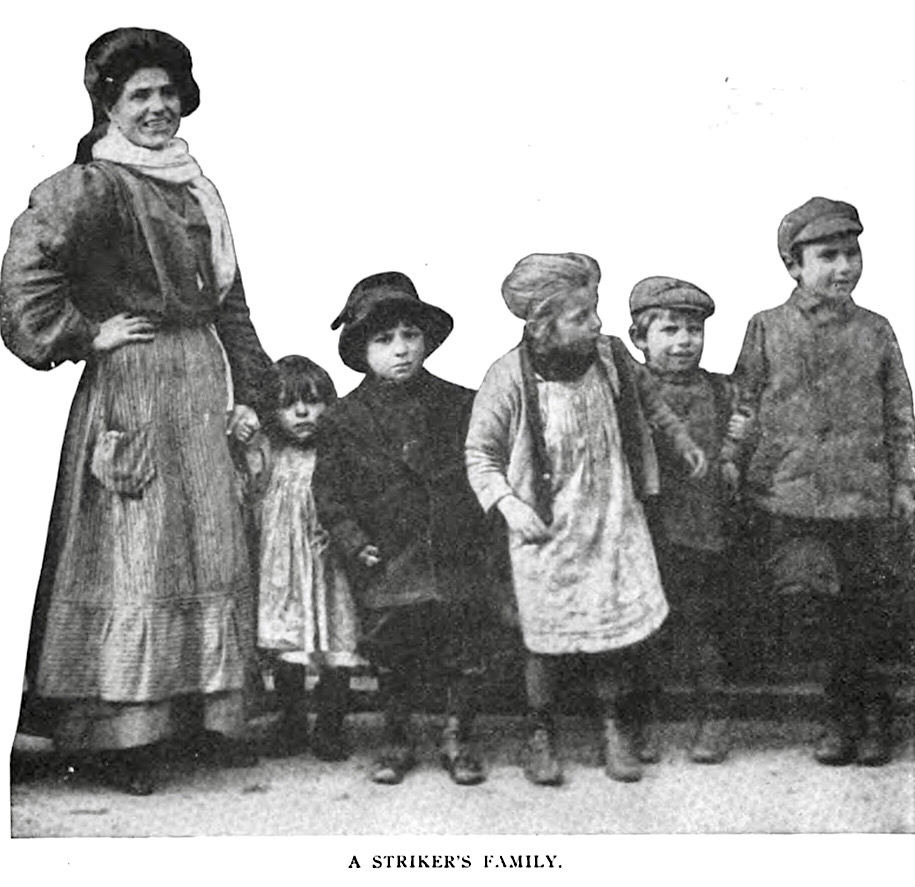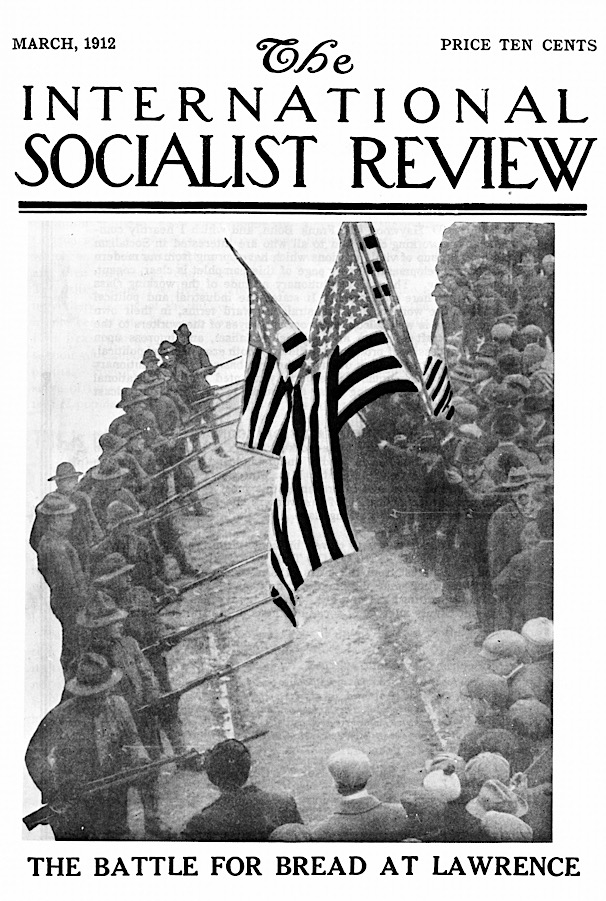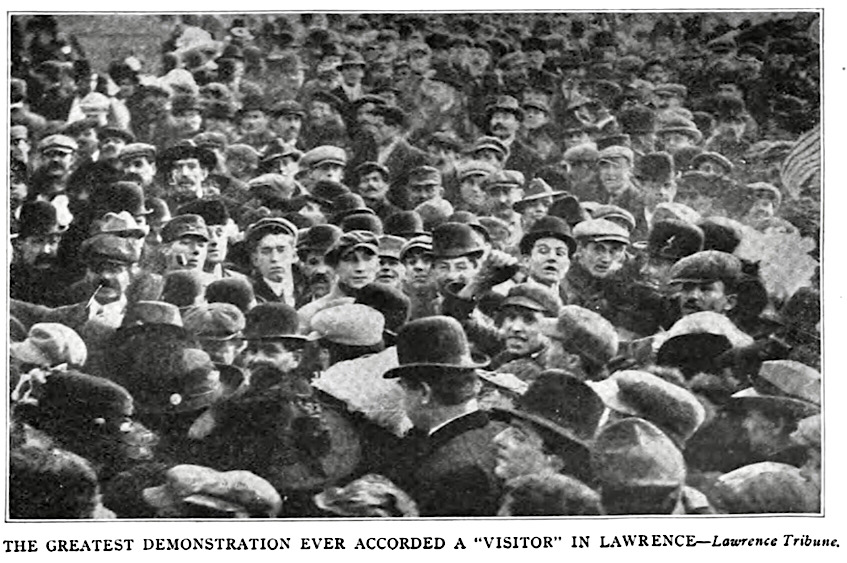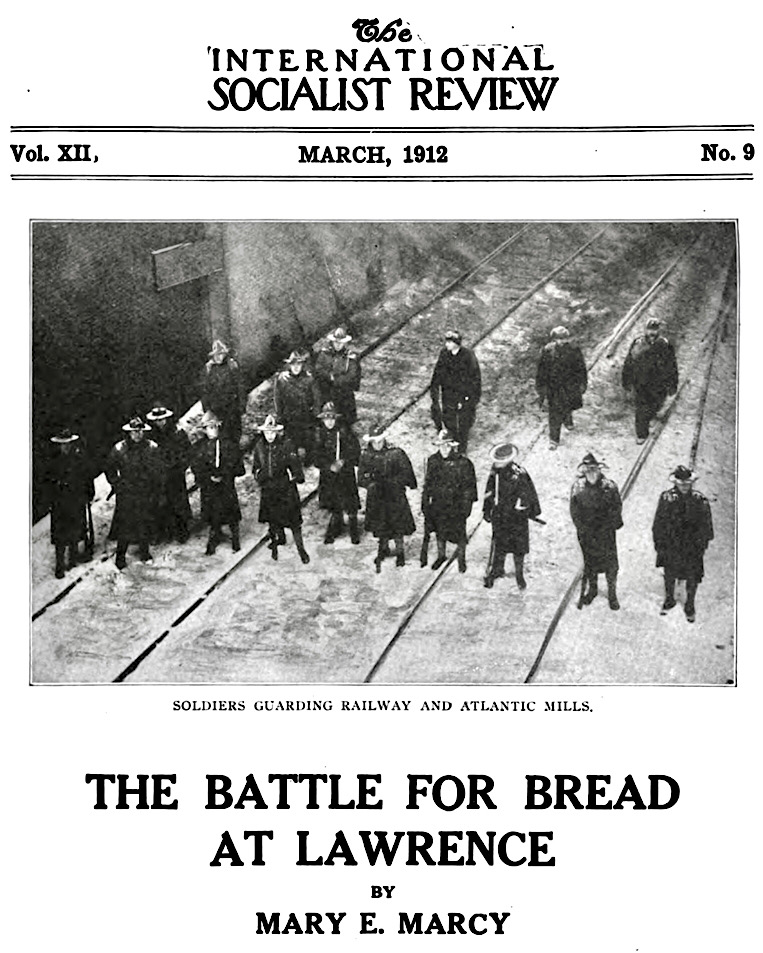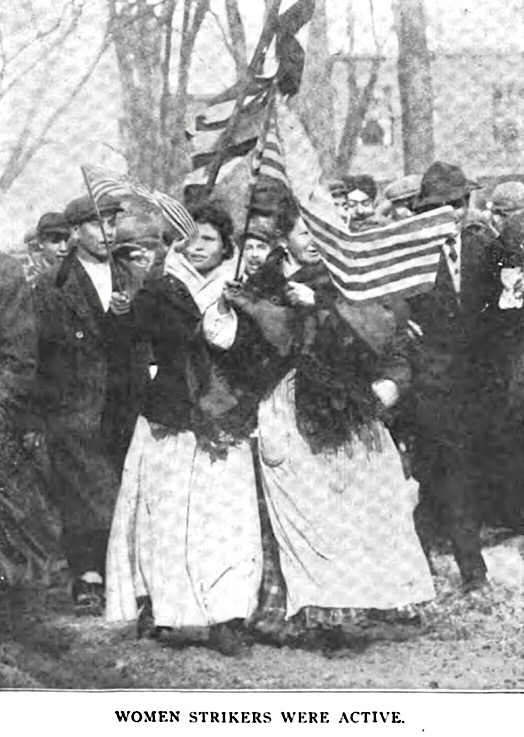 —————
—————
Hellraisers Journal – Wednesday March 13, 1912
Lawrence, Massachusetts – Mrs. Pinchot and Miss Marvin Investigate Conditions
From The Boston Daily Globe of March 11, 1912:
Left to Right-Mrs Amos Pinchot, Gertrude Marvin, William Gates,
Francis Miller, Edward Reilly, Rebecca Smith.
From the Bridgeport Evening Farmer of March 9, 1912:
Lawrence, March 9-Wearing a chic, white felt crush hat, long gray coat and high boots, Mrs. Amos Pinchot [Gertrude Minturn Pinchot], sister-in-law of Gifford Pinchot who came down here to investigate conditions for herself, was “out and about” at 6, this morning, despite the dismal drizzle that kept even many of the strikers off the picket route.
With Miss Margaret Marvin [Gertrude Marvin], a magazine writer, Mrs. Pinchot breakfasted in true cosmopolitan fashion in a typical “sling ’em out quick” counter lunchroom and then made the rounds of soup kitchens, tenement homes, police stations and courtroom. She argued with strike pickets, policemen and militiamen and got the point of view of everyone whom she saw and who “looked interesting.”
She spoke laughingly, today, of threats by policemen to arrest her for “obstructing the sidewalk” when she questioned them too closely and said she might be tempted when she gets back to New York to write about some of the “inhuman things” she has seen in her two days visit here.
—————-
[Emphasis added.]

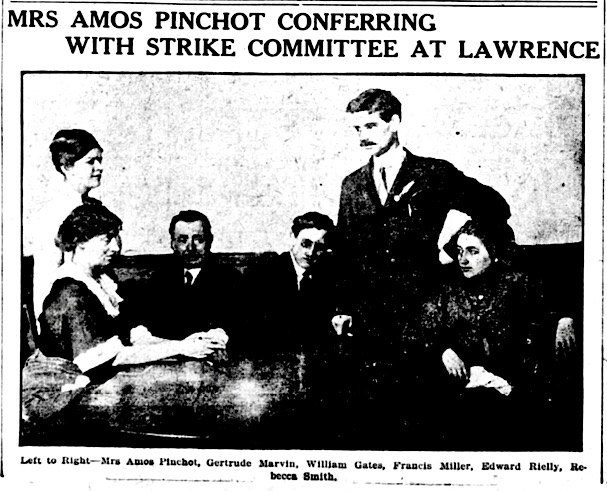
 —————
—————